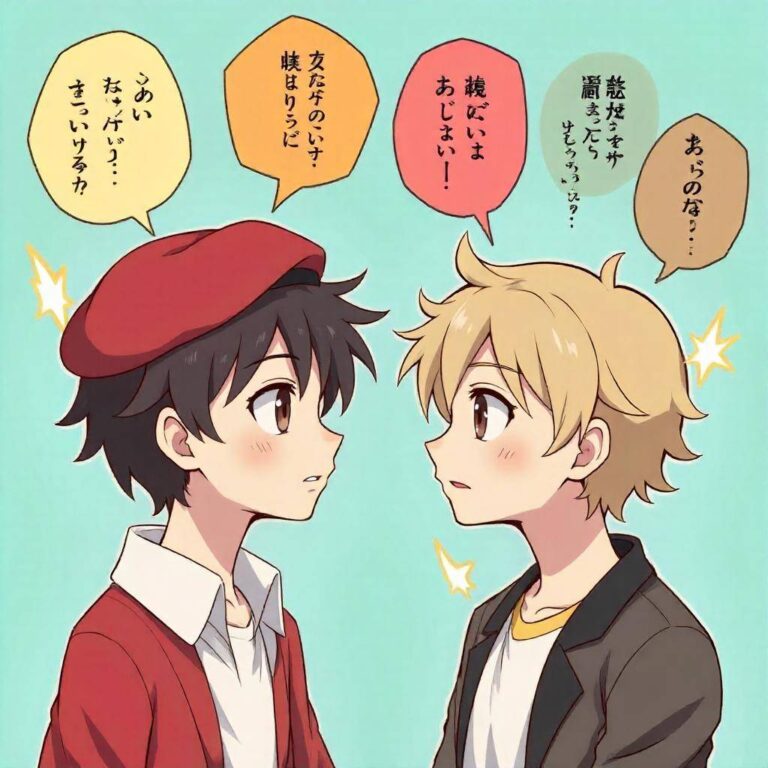Reader’s Question:
I’ve recently started watching Osomatsu-san, and I’ve come across the terms “A part” and “B part” quite often. What do they mean? Are they similar to happy endings and bad endings? I’m a bit confused, so I’d appreciate any clarification.
Understanding A Part and B Part in Osomatsu-san: A Deep
Dive
In recent years, the anime landscape has expanded to include a variety of genres, styles, and narrative structures. One show that has captured considerable attention is “Osomatsu-san,” a comedic series that follows the lives of the Matsuno sextuplets as they navigate adulthood in a world filled with absurdity. As you delve into this unique series, you might encounter terms like “A part” and “B part.” Understanding what these terms mean is essential for appreciating the show’s structure and narrative pacing, but they also offer insight into broader themes in storytelling and character development in anime.
Background Context: The Structure of Anime Episodes
Anime episodes are often structured in a specific format that enhances viewer engagement. The “A part” and “B part” designations refer to the two main segments of an episode. This format typically follows a pattern: 1. Opening Theme (OP) 2. A Part: The first segment of the episode, often setting up the main narrative or presenting a comedic premise. 3. Commercial Break (CM) 4. B Part: The second segment, which usually expands on the story introduced in the A part or transitions into a new scenario. 5. Ending Theme (ED) In some cases, an additional segment called the “C part” may follow the ending theme, often featuring short skits or outtakes that provide further comedic relief or character insights. This structure serves several purposes. Firstly, it allows for a clear separation of narrative arcs, making it easier for viewers to digest complex stories or comedic setups. Secondly, the division into parts can enhance suspense and anticipation, as the audience is left to ponder the resolution of the A part during the commercial break.
Industry Analysis: The Role of A and B Parts in Storytelling
From an industry perspective, the A and B part structure is not merely a matter of convenience but also an informed marketing strategy. By splitting episodes into two distinct segments, creators can experiment with different forms of humor, themes, and character dynamics, thereby appealing to a broader audience. For instance, in “Osomatsu-san,” the A part might focus on a specific comedic situation, such as the Matsuno brothers attempting to navigate the complexities of online dating. The B part then humorously escalates or resolves this scenario, perhaps leading to an even more absurd conclusion that highlights the characters’ ineptitude in real-life situations. This episodic structure resonates well with audiences familiar with sketch comedy formats, enhancing the overall viewing experience and allowing for more diverse storytelling.
Character Psychology: Development Through Segmentation
The dual-part structure of “Osomatsu-san” also provides a unique platform for character development. Each A part and B part presents opportunities for the characters to face new challenges, learn lessons, and develop their identities in the process. For example, consider the character of Osomatsu, the eldest brother. In one episode, the A part might showcase his desire to become a respected adult, yet he constantly finds himself in embarrassing situations, unable to escape his childish nature. The B part can then highlight his interactions with his brothers, showcasing how their relationships influence his self-image and decision-making. From a psychological perspective, this structure reflects theories of identity development, such as Erik Erikson’s stages of psychosocial development. Characters like Osomatsu embody the struggle between personal aspirations and societal expectations, a theme that resonates with many viewers navigating their own transitions into adulthood. Additionally, the comedic elements interspersed throughout the episodes allow for a more profound exploration of serious themes, such as failure, expectations, and familial bonds. By presenting these themes in a humorous context, creators can address complex psychological issues without alienating their audience.
Storytelling Ethics: The Balance of Humor and Seriousness
While the A part and B part structure provides a robust framework for storytelling, it also raises ethical considerations. The use of comedy, especially in a series like “Osomatsu-san,” necessitates a careful balance to avoid trivializing serious themes. Creators must be aware of the implications of their humor and how it can be interpreted by audiences. For example, jokes that center around mental health or personal failure must be handled delicately to ensure they do not perpetuate stigma or encourage negative stereotypes. Moreover, the episodic nature of the show means that recurring themes or motifs can create a cumulative effect on viewers. As a result, it is essential for creators to be mindful of the messages they convey through their narratives, ensuring they align with ethical storytelling practices.
Cultural Impact: Reflection of Contemporary Society
“Osomatsu-san” is not just a show about six brothers; it is also a mirror reflecting societal norms and contemporary challenges faced by young adults in Japan. The struggles of the Matsuno brothers resonate with issues such as unemployment, societal expectations, and the pressures of adulthood, all of which are prevalent in today’s society. The show’s humor often serves as a coping mechanism for audiences dealing with similar dilemmas. By exaggerating the absurdities of life, “Osomatsu-san” allows viewers to confront their realities with laughter, serving both as entertainment and as a form of psychological relief. Moreover, the series critiques societal conventions, such as the pressure to conform to traditional roles, especially in the context of family and career. The Matsuno brothers often subvert these expectations, highlighting the absurdity of adherence to such norms while encouraging viewers to embrace their individual journeys.
Practical Insights for Creators and Viewers
For creators looking to write compelling storytelling within the anime format, understanding the A and B part structure is crucial. Here are some actionable insights: 1. Utilize the Segmentation: Break your story into segments that allow for natural pacing. Use the A part to set up your premise and the B part for resolution or escalation. 2. Character Development: Develop characters that evolve between segments. Use the A part to introduce their flaws and the B part to showcase growth or acknowledgment of those flaws. 3. Balance Humor and Depth: Ensure that comedic elements do not overshadow serious themes. Aim for a balance that allows the audience to engage with both aspects meaningfully. 4. Cultural Relevance: Consider the societal context in which your story exists. Reflecting contemporary issues can create a deeper connection with your audience. 5. Feedback Loop: Encourage audience feedback and be open to adjusting your narrative based on their responses. This can enhance relatability and engagement. As a viewer, understanding the A and B part structure can enrich your viewing experience. Pay attention to how each segment contributes to character arcs and overarching themes. Analyze how humor is utilized to address serious issues, and consider the cultural commentary embedded within the narrative.
Conclusion: The Value of Understanding A and B Parts
As you immerse yourself in “Osomatsu-san,” recognizing the significance of the A part and B part structure will deepen your appreciation for the show’s nuances. This segmentation not only shapes the pacing of the narrative but also enriches character development and engages with broader societal themes. By embracing both the comedic and serious elements of the show, viewers can gain valuable insights into their own lives and the world around them. For creators, understanding this structure offers a robust framework for crafting compelling narratives that resonate with audiences. I invite you to share your own experiences with “Osomatsu-san” or other anime series that utilize similar structures. How do you perceive the balance between comedy and serious themes in these narratives? Your reflections can contribute to a deeper discourse on the art of storytelling in contemporary anime.



